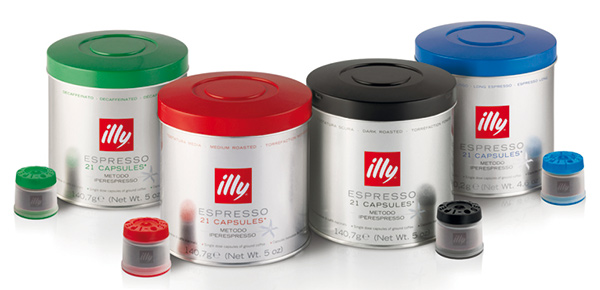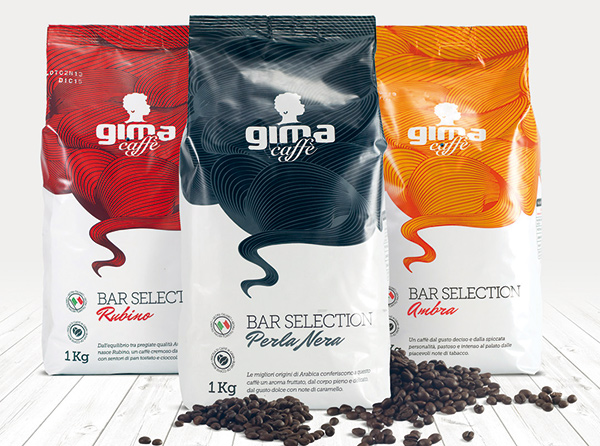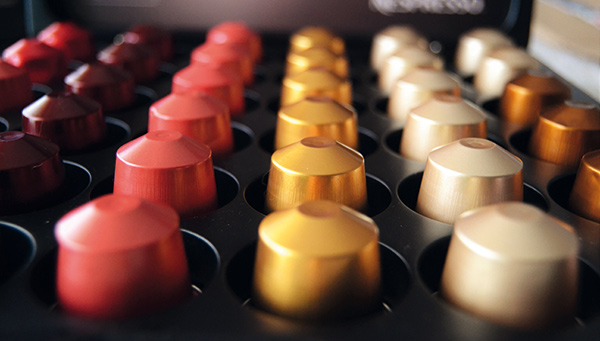Coffee: market and packaging
A summary of the most significant data on the Italian coffee sector (food & beverage area): production, imports, exports, domestic consumption and packaging types.

Over 800 businesses comprise this market for a total production value of 3.7 billion euro.
Italy is the world’s third biggest importer, behind the USA and Germany, of green coffee beans. In Europe, it is second only to Germany both in terms of total production volumes and of exported roasted coffee.
All coffee processed in Italy is imported as green coffee beans from a variety of countries (Brazil, Vietnam, India, Indonesia and Uganda).
According to Istat, approximately 580,200 t of green coffee beans were imported to Italy in 2016 (9% more than in 2015). During the same year, 433,400 t of roasted coffee was produced in the country (+4.6% compared to 2015).
As for foreign trade of roasted coffee, there was a 22% increase in imports and a 12.8% increase in exports, or 16,122 t and over 198,000 t, respectively.
EU countries represent the largest export markets for Italian roasted coffee, consuming 70% of it on average; the remainder goes primarily to the USA, Australia, the Russian Federation and, in recent years, the UAE and China, both seeing progressive growth.
Domestic consumption stands at some 250,900 t, a slight dip from 2015 (-0.2%). 69% of consumption is in the market for household consumption, while the remaining 31% is represented by coffee consumed in horeca channels (bars, restaurants, etc.).
Looking more closely at the supply side of the Italian market, of the 800 concerns primarily active in processing coffee and similar products, the top four account for roughly half of the total market (source: Beverfood).
Distinguishing between domestic use products and those for horeca, one can observe that the former is concentrated in the hands of leading national brands: Lavazza, Nescafé, Nespresso, Kimbo, Splendid, Illy and Segafredo collectively control three quarters of the market.
For horeca and vending machines the supply is much more varied, with no clear leader.
The concentration of supply is greatest in the product sector of portioned coffee, in which three operators (Lavazza, Nescafe Dolce Gusto and Nespresso) take up over 70% of the market.

Packaging trends: materials and uses
The coffee products marketed in Italy are for the most part packaged in flexible polylaminates, which hold a market share of 80.2%. That share is being progressively reduced by competition with pods and capsules, which reached 11.5% in 2016 and are also seeing a trend of constant growth in those made from biodegradable material.
Also in this area, special capsules, meaning those covered by a patent, represent 67% of the entire market.
Packaging in tinplate, whether as a jar or as a small drum, holds a 6.2% share showing progressive growth. This growth is essentially driven by the 3kg drums used in cafes, while the 250 g containers for household use are showing a decline trend.
Paper bags, used for sale of ground coffee at shops that distribute loose beans, show a stable 1.7% share.
Glass jars and paperboard boxes, used for instant coffee, stand at 0.3% and 0.1%, respectively.
When considering the packaging types used in the coffee sector, it is important not to forget the plastic and cellulose cups used by vending machines.

Packaging for exports. In 2016, 75.7% of the coffee products marketed for export were packaged in flexible polylaminate, which is progressively losing ground to capsules and pods. The latter types held a share of 12.3% in 2016.
Packaging in tinplate, both as a jar and as a drum for cafes, had a share of 12%. 54% of steel containers were 3 kg canisters, and 46% were 250 g jars.
Barbara Iascone
Istituto Italiano Imballaggio

















